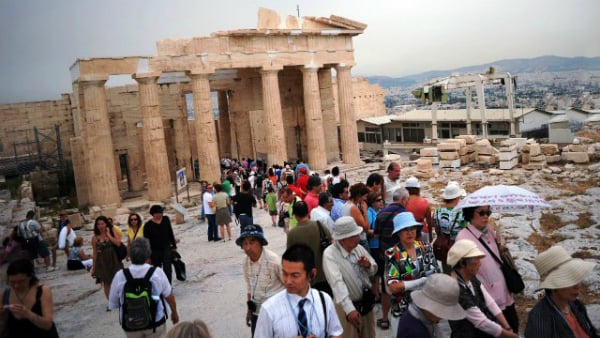
Photo: Protothema.
As the Greek debt crisis deepens, the national government has imposed a daily limit of €60 euros ($67) on cash withdrawals from ATMs.
The draconian measure has not only hindered locals, but the horde of tourists that are descending upon the country for the summer holidays as well.
Athens’s most popular tourist attraction, however, has come up with a handy solution: visitors to the world-famous ruins of the Acropolis can now pay for entry tickets by debit or credit card.
According to AFP, yesterday, the culture ministry said that demands for the Acropolis to accept cards to pay the €12 ($13.5) admission fee had been a long time coming, and that families want to be able to admire the Parthenon and surrounding ruins despite the cash shortage.
The ministry also said that tour operators would be allowed to buy entry passes to the site on an IOU basis and pay the money once the banks re-open.
Since the government imposed capital controls and decided to close banks on Sunday, long queues have formed across the country to retrieve cash from ATMs.
The cap on cash withdrawals, introduced on Monday, has worsened the situation. And although cards issued by foreign banks are exempt of the €60 limit, due to the ensuing massive demand for cash, ATMs began to run dry already on Monday.
The Acropolis, Athens’s hill-top citadel, is a 2,500-year-old temple complex dedicated to the Greek goddess Athena. It contains the remains of ancient buildings of unparalleled significance, including the Parthenon.
The Acropolis in Athens
Photo: A.Savin via Wikipedia